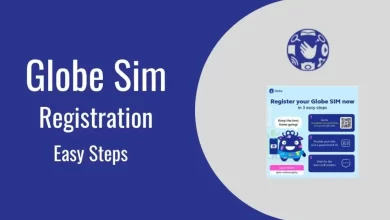An Overview of the Canada Express Entry System And the Comprehensive Ranking System (CRS) Score Updates.

Canada is renowned for its welcoming stance towards immigrants and its structured immigration policies. One of the most popular and efficient pathways for skilled immigrants to obtain permanent residency in Canada is the Express Entry system. Introduced in January 2015, Express Entry is an online system used by Immigration, Refugees, and Citizenship Canada (IRCC) to manage applications for permanent residence from skilled workers. This article provides a detailed overview of the Canada Express Entry system, including the Comprehensive Ranking System (CRS), who needs it, recent changes and eligibility criteria in 2024, updates on the CRS score, and a step-by-step guide on how to apply through Express Entry.
Express Entry is a dynamic and competitive immigration system designed to select skilled workers for immigration to Canada. It encompasses three federal immigration programs:
1) Federal Skilled Worker Program (FSWP): For skilled workers with foreign work experience who meet specific criteria in education, language proficiency, and work experience.
2) Federal Skilled Trades Program (FSTP): For skilled workers qualified in a skilled trade, requiring experience and certification in designated trades.
3) Canadian Experience Class (CEC): For individuals with Canadian work experience who have gained experience in Canada on a temporary work permit.
Express Entry also facilitates applications for provincial nominee programs (PNPs), allowing provinces and territories to nominate candidates for permanent residency based on their economic needs.
Comprehensive Ranking System (CRS)
The Comprehensive Ranking System (CRS) is a points-based system used to assess and rank candidates in the Express Entry pool. The CRS awards points based on several factors, including age, education, language proficiency, work experience, and other adaptability factors. The higher a candidate’s CRS score, the better their chances of receiving an Invitation to Apply (ITA) for permanent residence.
Who Needs Express Entry?
Express Entry is essential for skilled workers who wish to immigrate to Canada and obtain permanent residency. It is particularly beneficial for:
1) Skilled Professionals: Individuals with professional qualifications, work experience, and skills in high-demand occupations in Canada.
2) International Students: Graduates from Canadian educational institutions who have gained work experience in Canada and wish to transition to permanent residency.
3) Temporary Foreign Workers: Workers in Canada on temporary work permits looking to secure permanent residency.
4) Provincial Nominees: Individuals nominated by a Canadian province or territory through a Provincial Nominee Program (PNP) linked to Express Entry.
Recent Changes and Eligibility Criteria in 2024
The Express Entry system is continually updated to reflect Canada’s evolving economic needs and immigration priorities. As of 2024, several changes and updates have been introduced to streamline the process and enhance the system’s efficiency. Here are some of the key updates:
1) Targeted Draws: In addition to general draws, IRCC has introduced targeted draws focusing on specific skills, occupations, or attributes that align with Canada’s labor market needs. This approach helps address shortages in specific sectors.
2) Updated NOC System: The National Occupational Classification (NOC) system has been updated to NOC 2021, affecting how occupations are classified and assessed for eligibility. Applicants must ensure their work experience matches the updated NOC codes.
3) Changes in Language Requirements: While language proficiency remains a critical factor, there have been adjustments in the scoring system for language tests, making it imperative for applicants to stay updated with the latest requirements.
4) Increased Emphasis on Canadian Experience: The new changes give more weight to candidates with Canadian work experience, recognizing the value of local experience in facilitating successful integration into the Canadian labor market.
Comprehensive Ranking System (CRS) Score Updates
The CRS score is crucial in determining a candidate’s eligibility for an Invitation to Apply (ITA). The score is calculated based on the following components:
1) Core/Human Capital Factors: These include age, education, language proficiency (English and/or French), and Canadian work experience.
2) Skill Transferability Factors: These factors consider the combination of education, foreign work experience, and a certificate of qualification in a trade.
3) Additional Factors: These include factors such as a valid job offer, provincial nomination, sibling in Canada, and proficiency in both official languages.
Recent CRS Score Trends: As of 2024, the CRS cut-off scores have varied depending on the type of draw (general or targeted). The average CRS cut-off scores have been in the range of 470-490 for general draws, while targeted draws have had lower cut-off scores for specific occupations or attributes.
Step-by-Step Guide on How to Apply for Express Entry
Applying for Express Entry involves several steps. Below is a comprehensive guide to help candidates navigate the application process:
1) Determine Eligibility: Before applying, ensure you meet the eligibility criteria for one of the Express Entry programs (FSWP, FSTP, or CEC). Use the IRCC’s online tool to assess your eligibility.
2) Gather Required Documents: Collect all necessary documents, including:
- Passport or travel document
- Language test results (IELTS, CELPIP for English; TEF, TCF for French)
- Educational credential assessment (ECA) report for foreign degrees
- Proof of Canadian work experience (if applicable)
- Provincial nomination (if applicable)
- Job offer from a Canadian employer (if applicable)
3) Create an Express Entry Profile: Create an online profile on the IRCC website. You will need to provide detailed information about your skills, work experience, language ability, education, and other personal details. Your profile will be scored based on the CRS, and if you meet the minimum requirements, you will be entered into the Express Entry pool.
4) Improve Your CRS Score: While in the pool, you can take steps to improve your CRS score, such as:
- Enhancing language test scores
- Completing additional education or obtaining higher qualifications
- Gaining more work experience
- Securing a valid job offer or provincial nomination
5) Receive an Invitation to Apply (ITA): If you have one of the highest-ranking scores in the pool, you will receive an ITA. This means you are invited to apply for permanent residence.
6) Submit Your Application for Permanent Residence: Once you receive an ITA, you have 60 days to submit a complete application for permanent residence. This includes:
- Completing the online application form
- Uploading all required documents (police certificates, medical exams, proof of funds, etc.)
- Paying the application fees
7) Medical and Security Checks: Undergo medical examinations by a panel physician approved by IRCC. Obtain police certificates from all countries where you have lived for more than six months since the age of 18.
8) Final Decision: After submitting your application, IRCC will review it. This includes verifying the authenticity of your documents, conducting background checks, and ensuring you meet all eligibility requirements. The processing time can vary, but IRCC aims to process most applications within six months.
9) Receive Confirmation of Permanent Residence (COPR): If your application is approved, you will receive a COPR document and a permanent resident visa (if you are from a country that requires a visa). This document confirms your status as a permanent resident.
10) Landing in Canada: With your COPR, you can travel to Canada and complete the landing process at a port of entry or an IRCC office. During this process, a Canadian border services officer will confirm your permanent resident status.

Tips for a Successful Express Entry Application
1) Stay Updated: Regularly check the IRCC website and other reliable sources for updates on the Express Entry system, CRS score requirements, and policy changes.
2) Prepare Thoroughly: Ensure all your documents are accurate, complete, and up-to-date. Mistakes or missing documents can delay the processing of your application.
3) Improve Language Skills: Language proficiency is a significant factor in the CRS score. Consider taking language courses or retaking language tests to improve your scores.
4) Seek Professional Advice: If you find the process complex, consider consulting with a licensed immigration consultant or lawyer who can provide expert guidance.
Case Studies and Real-life Examples
To provide a deeper understanding of the Express Entry process, let’s consider a few real-life examples:
Ahmed from Egypt: Ahmed, a software engineer with five years of work experience, decided to apply for Express Entry. He had an advanced level of English proficiency and a bachelor’s degree. After creating his Express Entry profile, his CRS score was 450. Ahmed realized that improving his language scores could significantly boost his CRS score. He took additional English courses, retook the IELTS, and achieved higher scores. This improved his CRS score to 475, and he received an ITA in the next draw.
Maria from Brazil: Maria, a civil engineer, completed her master’s degree in Canada and gained one year of Canadian work experience. She created her Express Entry profile with a CRS score of 460. Knowing that a provincial nomination could increase her score by 600 points, she applied for the Ontario Immigrant Nominee Program (OINP) under the Human Capital Priorities stream. She received a provincial nomination, boosting her CRS score to 1060, and subsequently received an ITA.
Chen from China: Chen, a chef with several years of experience, applied through the Federal Skilled Trades Program (FSTP). He had moderate English proficiency and a certificate of qualification in his trade. His initial CRS score was 320. To improve his chances, Chen gained additional work experience and improved his English proficiency. His CRS score increased to 350, and he received an ITA in a targeted draw for skilled trades.
Future Prospects and Trends
The Express Entry system continues to evolve, with IRCC making adjustments to meet Canada’s labor market needs and economic goals. Future trends may include:
- More Targeted Draws: Expect an increase in targeted draws focusing on specific occupations, skills, and regions to address labor shortages in critical sectors.
- Enhanced Role of Provincial Programs: Provincial Nominee Programs (PNPs) will continue to play a significant role, offering pathways for candidates who may not meet the CRS cut-off in federal draws but have skills needed in specific provinces.
- Increased Focus on French-Speaking Candidates: Canada’s emphasis on bilingualism may lead to more opportunities for French-speaking candidates, particularly in provinces like Quebec and regions with Francophone communities.
- Adapting to Economic Changes: The system will likely adapt to reflect changes in the global economy, labor market trends, and technological advancements, ensuring that Canada attracts the best and brightest from around the world.
Conclusion
The Canada Express Entry system is a dynamic and efficient pathway for skilled immigrants to obtain permanent residency in Canada. Understanding the Comprehensive Ranking System (CRS), staying updated with recent changes, and meticulously preparing your application are crucial for success. By following the step-by-step guide and utilizing the tips provided, candidates can navigate the process with confidence and enhance their chances of receiving an Invitation to Apply (ITA).
Express Entry not only facilitates the immigration process but also aligns with Canada’s economic and demographic goals, ensuring that the country remains competitive and prosperous in the global arena. For skilled workers aspiring to build a future in Canada, Express Entry offers a transparent, merit-based, and efficient route to achieving their dreams.





